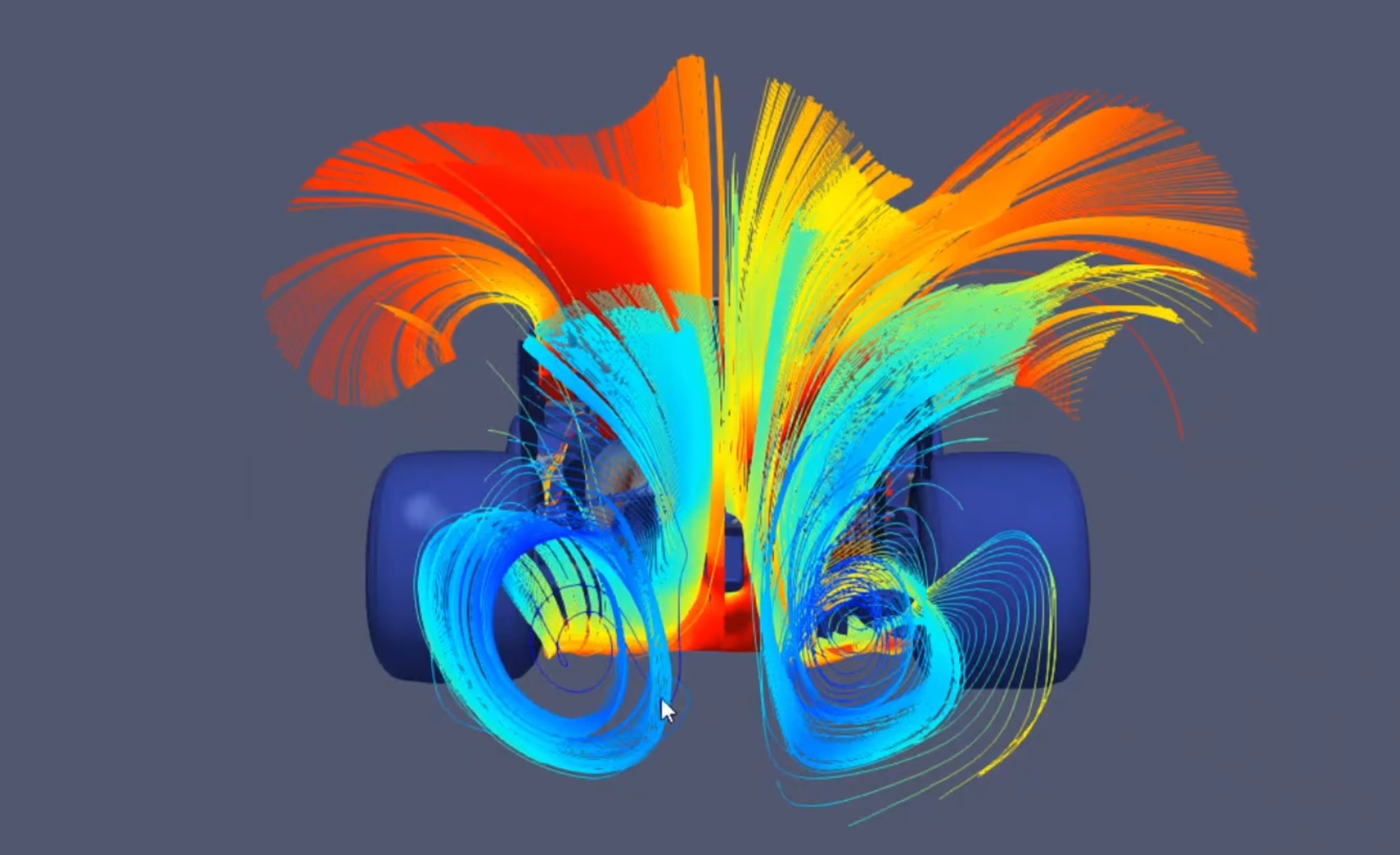Perhaps using technical definitions rather than hand-waving made-up stuff would be helpful. It's how engineering works, really.
- Login or Register
No account yet? Sign up
Perhaps using technical definitions rather than hand-waving made-up stuff would be helpful. It's how engineering works, really.


This is the problem with making fun of people for having education. But then misusing terms which just serves to confuse issues. Tyre squirt doesn't choke the diffuser. A "choked" duct would be one where the mass flow exceeds the capacity of the area so the flow stalls (boundary layer separates). The issue of tyre squirt is mainly one of dynamic pressure. So "low energy" flow going into a "high energy" region. Not that it has owt to do with energy.
The barn door wing isn't about the wing's tips or its endplates. It's about the rear wheel aerodynamic devices laughingly considered to be part of the brake duct. The three you mention are less hampered by the rules that reduced these devices. Mercedes runs the big rear wing because the rule about the brake duct devices has hampered them resulting in less diffuser throat down force. So they are forced to run a bigger rear wing to compensate.godlameroso wrote: ↑10 Jul 2021, 16:56Red Bull, Alpine, and McLaren have shown you don't need a barn door rear wing to strengthen the rear wing tip vortex, the retraction and slots, and curvature of the wing can help.
The contrails aren't being pulled to the centre of the plane at all. They're streaming from the wing tips in basically a straight line.godlameroso wrote: ↑10 Jul 2021, 16:24https://files.catbox.moe/r3fg62.jpg
Look closely, the plane has the wings splayed outwards, the under side of the plane is the static pressure side, you can see how all the air wants to wrap around the bottom of the plane. The contrails get pulled to the center of the plane because all the airflow above the plane is slick fast moving air. The still static high pressure air gets pulled in the direction of lowest pressure.
Can we both agree that turbulence is good at mixing, just like its good at mixing an air and fuel mixture? Or the low pressure caused by the intake stroke?jjn9128 wrote: ↑10 Jul 2021, 19:21This is the problem with making fun of people for having education. But then misusing terms which just serves to confuse issues. Tyre squirt doesn't choke the diffuser. A "choked" duct would be one where the mass flow exceeds the capacity of the area so the flow stalls (boundary layer separates). The issue of tyre squirt is mainly one of dynamic pressure. So "low energy" flow going into a "high energy" region. Not that it has owt to do with energy.
Tyre squirt is about the rotating boundary layer meeting the immovable object of the ground so rolling up. Then jetting around the tyre sidewall. So there's not a let you can do to influence the squirt vortex. But instead try to influence where it goes.
I'm not sure any "real" 2022 rear wings will have that profile.


You did see the bit where he said he had an issue with the Red Bull mesh in the diffuser throat area, yes? Until he sorts that and reruns it, the comparison is suspect as are any conclusions drawn from it.godlameroso wrote: ↑14 Jul 2021, 03:49https://files.catbox.moe/zfwk1i.jpg
RB15 on the left Mercedes on the right.
You can see Mercedes places more emphasis on the brake ducts, whereas RB15 tries to get really clean vortices from the diffuser and rear wing.
It's not entirely accurate but the gist of it is more or less there.
With the stream lines you can see why the serrated edges of the diffuser would come in handy.
As we can see, the diffuser central section has the highest velocity air, the strakes, create a laminar divergence, two counter rotating vortices form as the central section creates a low pressure opening for the air upstream to shoot right on by.
All the vortices at the rear of the car benefit each other. There's a few key details that are being left out, they cannot be computed easily.
I would suspect that some airflows are close to the .7 mach number that creates these compressibility effects. However the pressure analogy is correct. Pressure is pressure, whether it's you pumping iron or air lifting a plane, or pipes bursting. Good video though.
I'd be very surprised if compressibility is even close to being an issue in F1. The fastest speed an F1 car has done in a race is over 100km/h slower than the speeds where compressibility is even considered to be starting to be an issue.godlameroso wrote: ↑14 Jul 2021, 14:34I would suspect that some airflows are close to the .7 mach number that creates these compressibility effects. However the pressure analogy is correct. Pressure is pressure, whether it's you pumping iron or air lifting a plane, or pipes bursting. Good video though.
A free paper for y'all.Just_a_fan wrote: ↑14 Jul 2021, 15:07I'd be very surprised if compressibility is even close to being an issue in F1. The fastest speed an F1 car has done in a race is over 100km/h slower than the speeds where compressibility is even considered to be starting to be an issue.godlameroso wrote: ↑14 Jul 2021, 14:34I would suspect that some airflows are close to the .7 mach number that creates these compressibility effects. However the pressure analogy is correct. Pressure is pressure, whether it's you pumping iron or air lifting a plane, or pipes bursting. Good video though.
If local airspeed started to get in to the compressibility speeds, we'd see shockwaves developing and things would go wrong pretty quickly. A shockwave under the car, for example, would choke the floor leading to rear instability and much crashing in to the scenery.